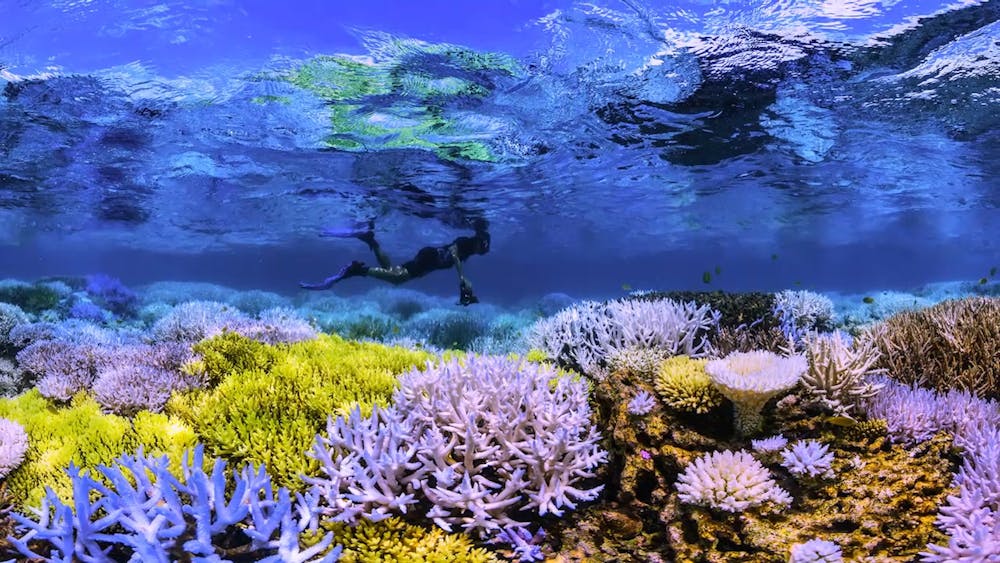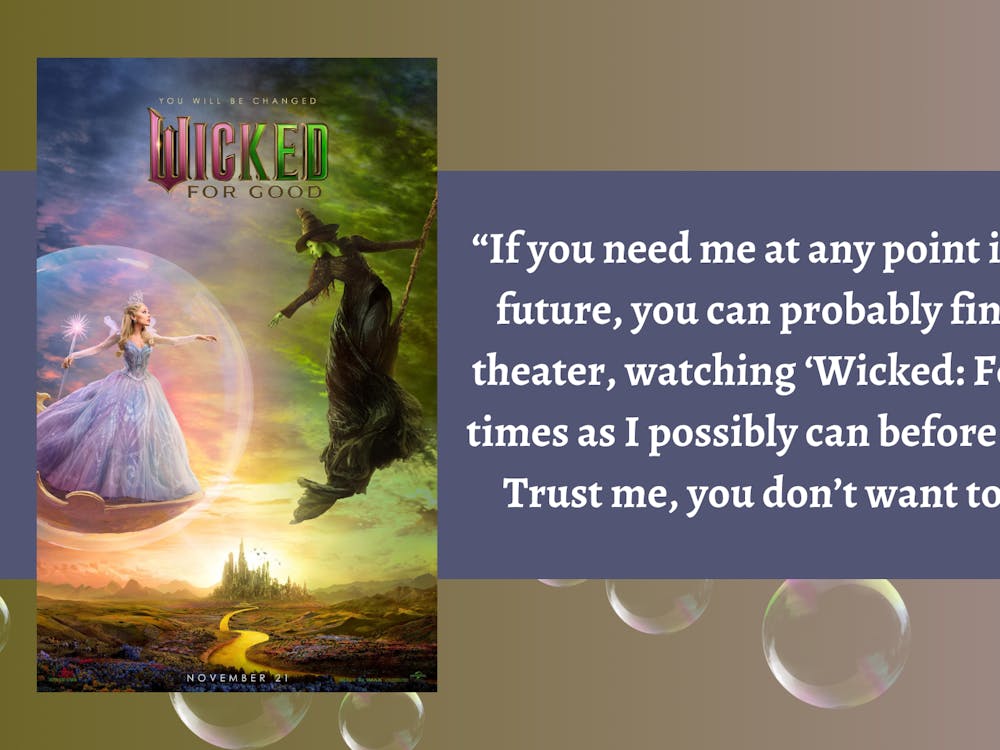When thinking about essential life on Earth, coral may not come to mind. However, the Tuesday Sept. 27 ’s screening of the film “Chasing Coral” called attention to what is often out of sight and out of mind, while preparing viewers for the upcoming Hefner Lecture series.
“There’s some things that are so epic that you have to sit up and listen when they’re threatened, and our coral ecosystems have got to be one of those things,” said Carla Blackmar, curatorial assistant at the Hefner Museum of Natural History.
The film, which is available on YouTube and Netflix, shares the story of scientists creating a time-lapse of coral bleaching and death, but also gives insight on why this matters. According to the film, coral reefs act as cities for biodiversity, sheltering fish, crabs, shrimp and more. Up to 25% of marine life relies on coral and so do roughly 1 billion people.
The marine life supported by coral reefs is important to many cultures, food sources and therefore economies. Additionally, coral reefs protect against powerful waves and tropical cyclones. The film even showed how some cancer medications are derived from corals.
Ocean warming due to greenhouse gas emissions threatens these reefs and the life they support. Even a 2-degree Celsius increase begins to interfere with coral’s ability to function and feed normally.
The film compares temperatures to an increasing fever within the human body. If left untreated, it will most likely result in death. This process of coral degradation, known as bleaching, turns vibrant reefs into dull graveyards. The film focuses heavily on contrasting visuals between the before and after to drive home its message.
Despite challenges in recording and constructing underwater, the scientists were eventually successful in capturing the bleaching. Although displaying a heavy reality, the film leaves off on a hopeful note for the future. Richard Vevers, a leader of the project, states that a great movement is inevitable, and we just have to “give it a bit of a shove.”
This ending resonated with Isabelle Turner, a second-year master’s student of biology who was part of the small crowd that came to see the movie.
“It’s nice that they have a call to action at the end so that viewers are not just left sitting in their own like ‘oh my god, there’s no point in trying to do anything because we’re all helpless,” Turner said.
On Nov. 9, the Hefner Museum will host James Porter, a celebrated marine ecologist who served as the science advisor for the film, for a talk on the medicinal and conservational need to save coral reefs. Porter will hold a re-enactment of his testimony before Congress at 4:15 in Shideler 152, which many witnesses say influenced the United States to sign the United Nation’s Ocean Biodiversity Treaty.
Blackmar says this is an opportunity for students who want to experience what it may be like to “defend your research, defend the things that you study, in that kind of really intense international law environment.” Later that evening on Nov. 9, Porter will give a lecture on saving coral reefs at 7:30 in Laws Hall 100. Together, “Chasing Coral” and this year’s Hefner Lecture strive to bring the seemingly distant issue of coral reefs a little closer to home.




